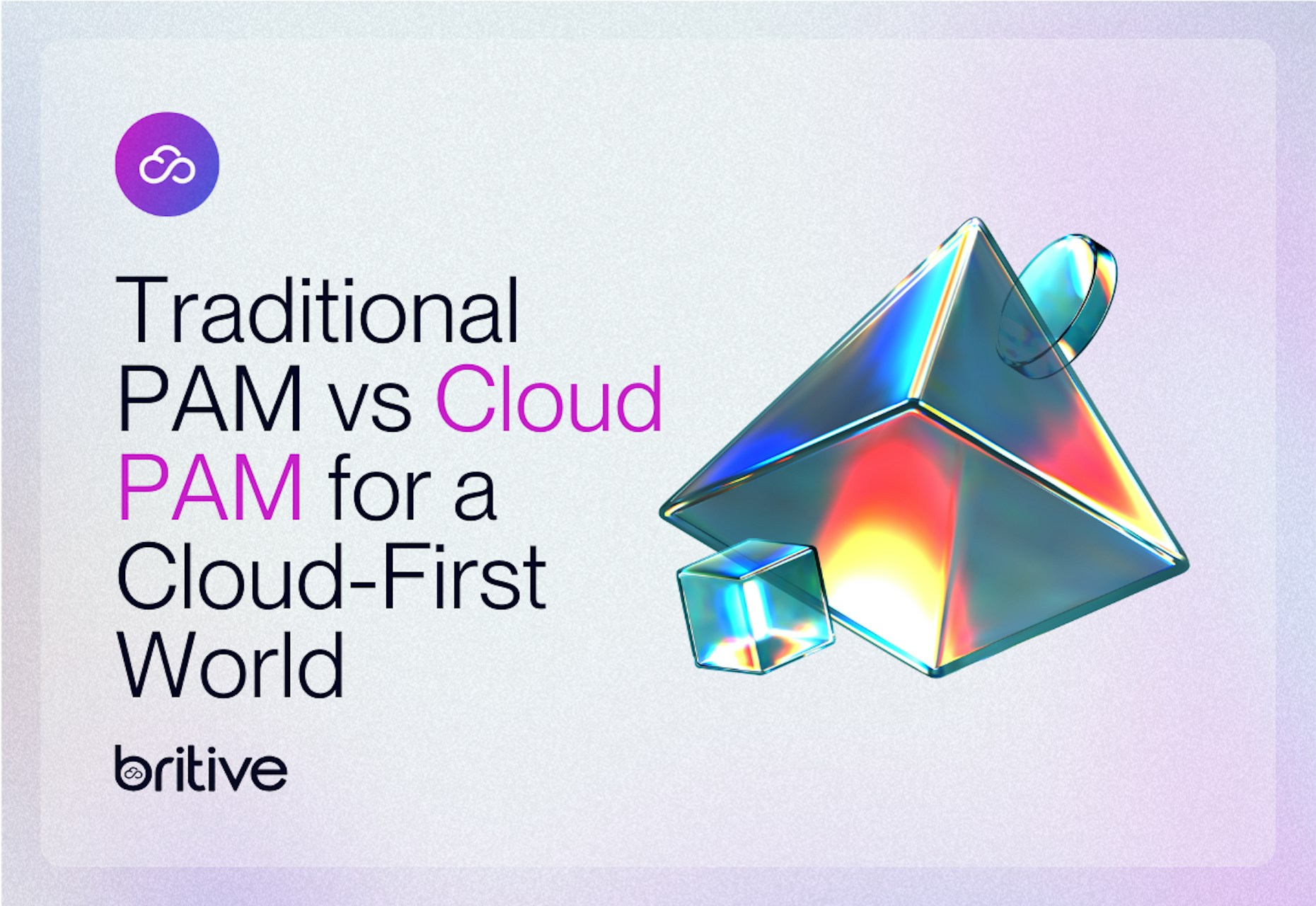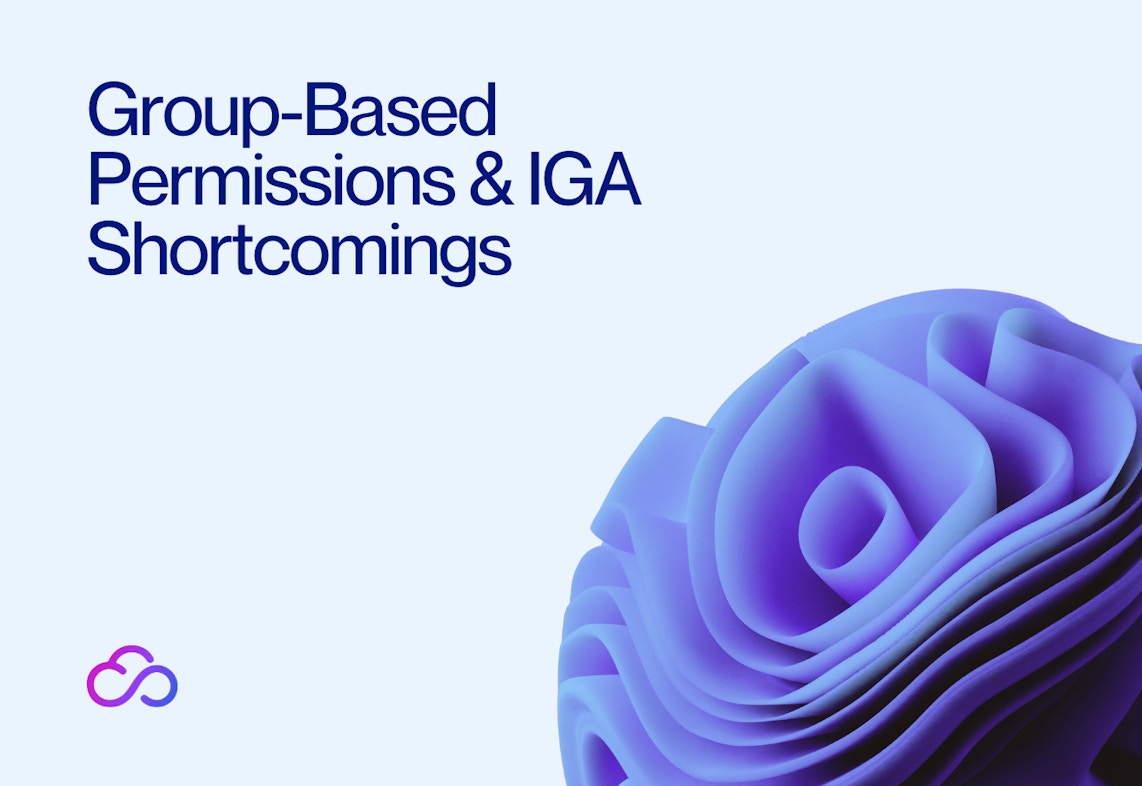
In a recent episode of the Cloud Security Podcast, Britive’s CEO and Co-Founder, Art Poghosyan, sat down with host Ashish Rajan to delve into the evolving world of identity and access management (IAM) in the cloud era. The conversation offered invaluable insights into the limitations of traditional Privileged Access Management (PAM) and the need for a new approach in cloud-native environments.
While unpacking the complexities of cloud infrastructure entitlements, Poghosyan emphasized the shift from traditional on-premises PAM to cloud-based strategies, stressing that in the modern landscape, "Identity is the new perimeter." The conversation explored key trends like the growing importance of Just-in-Time (JIT) access, managing non-human identities, and how identity now plays a critical role as both the first and last line of defense in cloud security.
The episode, recapped below, provides an in-depth look at why organizations must rethink their security strategies to adapt to the cloud's dynamic nature.
Traditional PAM vs. Cloud PAM (CPAM)
The conversation kicked off by contrasting traditional on-prem PAM systems – where privileged access is usually limited to high-level administrators with login privileges – with its broader application in cloud environments. In the cloud, the focus extends beyond privileged logins to include managing resource entitlements and day-to-day access permissions. This broader scope in CPAM highlights the complexity and need for more granular controls.
As Poghosyan noted, tools like Security Assertion Markup Language (SAML) are often used for centralizing access to cloud resources, but they are not without limitations. "SAML is a great tool,” he said, “But it falls short on addressing authorization and approval in security."
SAML helps manage authentication and federated identity but doesn't fully address authorization and access approvals. This means that while SAML plays a role in simplifying access management, it must be complemented by other solutions to ensure a secure, comprehensive PAM strategy in the cloud.
SAML is just one of the tools available in the complex world of cloud, and it does not cover the exposure and complexity of other aspects such as the CI/CD pipeline.
Just-In-Time (JIT) Access for Enhanced Control
At the core of the discussion was the increasing need for Just-In-Time (JIT) access in cloud environments. JIT access, which grants ephemeral permissions to resources only when necessary, can significantly reduce the risk of over-provisioned access—a common problem in cloud deployments. JIT access not only improves security but also enhances operational efficiency by allowing developers to quickly gain the access they need without sacrificing security.
By implementing JIT, organizations can strike a balance between agility and control, making it possible for security teams to address access issues in real time, especially during sensitive operations like deployments.
Making JIT access self-service and developer-friendly is crucial to ensure speed and efficiency in access management.
The Role of Automation in PAM
While exploring how automation is transforming PAM processes, Poghosyan shared a notable example of a Britive customer who reduced access setup time from three days to just 30 minutes by adopting an automated, pipeline-driven approach to PAM. This reduction illustrates how automation can drive both efficiency and productivity, making PAM more scalable as cloud environments grow increasingly complex.
Automation allows for the continuous enforcement of security policies without the manual overhead, and it helps teams manage thousands of entitlements efficiently. This not only improves operational speed but also strengthens compliance and audit capabilities.
Challenges of Cloud Identity and Access Management (IAM)
Next, the conversation moved into the broader challenges faced by IAM teams working in cloud environments. Managing entitlements in the cloud often involves handling tens of thousands of roles, permissions, and policies. The speakers discussed how traditional static access models are giving way to more dynamic, adaptive approaches, such as role-based access control (RBAC) and attribute-based access control (ABAC), which are better suited to the cloud's ever-changing nature.
They emphasized the importance of adopting least-privilege access principles, leveraging real-time user data, and implementing automation to ensure access levels align with users' actual needs. By continuously reviewing and refining IAM processes, organizations can stay ahead of security risks while improving overall access management.
The key to leveling up IAM processes is transitioning from static access to dynamic access and using data on usage to enforce least privileged access and create new roles aligned with user needs.
PAM in the Context of Zero Trust Security
Touching on how PAM fits within the broader framework of zero trust security, both speakers highlighted the critical need to verify and monitor access continuously, especially as cloud environments become more complex. Zero trust principles demand that access be granted based on thorough verification and that PAM tools be equipped to handle constant monitoring, authorization, and access audits.
As organizations adopt a zero trust security model, tools that can enforce least-privilege access, automate access reviews, and monitor suspicious activities are essential for maintaining robust security.
Wrapping Up
This meeting of minds between two industry leaders served as a testament to the complexity and evolving nature of PAM, particularly in cloud environments.
The conversation underscores the indispensable role of CPAM in ensuring robust security measures, pushing organizations to ensure this function is not just an afterthought but a cornerstone of their security strategy.
Key Takeaways from the Conversation:
- Cloud PAM vs. Traditional PAM: The shift to cloud environments requires a broader approach to managing entitlements, focusing on daily access permissions in addition to privileged logins.
- SAML's Limitations: While SAML helps centralize access management, it doesn't fully address authorization, emphasizing the need for additional PAM solutions in the cloud.
- JIT Access: Just-In-Time access helps reduce security risks and allows for faster, more efficient developer workflows.
- Automation's Role: Automated PAM processes can dramatically improve access setup times and help manage large-scale entitlements more effectively.
- IAM Complexity: Managing cloud entitlements involves navigating compliance, audit, and risk management challenges, necessitating dynamic and automated approaches.
- Zero Trust Security: Effective PAM strategies must be embedded within a zero trust security framework, emphasizing continuous verification and monitoring.
For more actionable insights from Art & Ashish, and for organizations looking to improve their access management and security posture, you can watch the full episode here.
Interested in learning more about access management built specifically for modern cloud, hybrid, and on-prem environments? Reach out to the Britive team for an in-depth demo.




